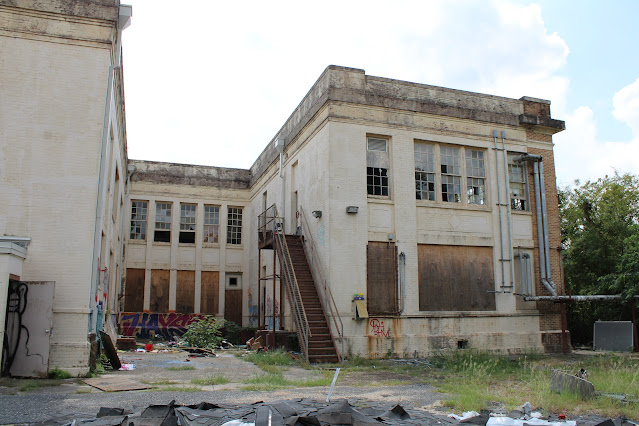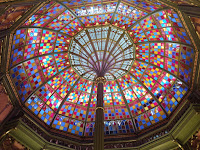Baton Rouge (Images of America) Paperback by Sylvia Frank Rodrigue - $24.99 @ Amazon.com
Beautiful ( ... and Historical) Louisiana - The Old State Capitol in Baton Rouge
Louisiana Through My Lens - Why is there a Cannon embedded in a Baton Rouge Sidewalk?
Anyone walking down 3rd Street in downtown Baton Rouge, Louisiana may (or may not) notice a strange cylindrical metal object sticking out of the sidewalk. The object is rather obscure and one would be lead to believe that it my be some sort of old sewer pipe or something like that. Most people that pass by this object and generally don't give it a second thought. - READ MORE
Louisiana Through My Lens - Bayou Plaquemine Waterfront Park
One of my favorite places in Louisiana is Bayou Plaquemine Waterfront Park and the adjacent Plaquemine Lock State Historic Site. I really enjoy the site for it's history as well as it's beautiful well kept grounds. It's a great place to take a peaceful walk by yourself or enjoy a picnic with family. Every time I have been there the location has been quite, peaceful and surprisingly devoid of more than a handful of visitors. It is truly one of the Pelican State's true hidden gems. - READ MORE
They don't build them like this anymore, in fact this incredible structure dates back to the early 20s and it is one of the only survivingBeaux Arts/Neo-Classical style structures left in the city.
Here is some history from the State of Louisiana archives:
The Nicholson School is locally significant in the area of architecture as one of a limited number of major examples illustrating the Beaux Arts/Neo-Classical taste in Baton Rouge. Although the official founding date of the community is recognized as 1719, Baton Rouge has retained only a relatively small number of historic commercial and institutional buildings with their integrity intact. Those which remain are generally found in one of three locations--the Central Business District, the Louisiana State University Campus, and older residential neighborhoods which stand near downtown. The low survival rate is due largely to the fact that the city remained prosperous after the Depression and into the 1950s and 1960s. As a result, the community's older commercial and institutional buildings suffered considerable alteration and demolition. Although there are various buildings in Baton Rouge which display the Beaux Arts and Neo-Classical tastes (chiefly the latter), most examples are low-key, featuring only sparingly applied details such as pilasters used for accent. Less than ten are fully articulated examples of these classical styles. This number is verified by a survey of downtown Baton Rouge and the National Register staff's familiarity with the rest of the city. Nicholson is one of these Beaux Arts/Neo-Classical landmarks. Though not the largest or grandest, it has the most elaborate detailing, featuring a number of classical motifs. This can be seen in the school's finely executed central pavilion, which exhibits engaged colossal columns; reeded pilasters; a full entablature; a stepped parapet; an ornamental fan form composed of elongated leaves and bell flowers; and examples of bead and reel, egg and dart, and Vitruvian scroll molding. These features make Nicholson School an important example of the Beaux Arts/Neo-Classical taste within the City of Baton Rouge.Map:
Historical Note:
Nicholson School is named for Louisiana educator James William Nicholson. Nicholson moved as an infant with his family from Alabama to Claiborne Parish, Louisiana in 1844. Extremely intelligent, he entered college at age fourteen but left two years later to join the Confederate Army. After the war he completed his training and was awarded a Master's degree from Homer College in 1867. Ten years later he was elected chairman of the mathematics department at Louisiana State University, which he also served twice as president (1883-1884 and 1887-1896). After his second term as university president, he resumed chairmanship of the mathematics department. Nicholson died in 1917.
Check Out:
If you are impressed by castle-like exterior you will be simply blown away by what's inside. The lower floor is filled with historic exhibits dedicated to the history of the capitol building, the early days of Louisiana and its favorite son, the infamous Huey P. Long. A majestic circular stairway leads to the second floor that includes a majestic ballroom, spacious auditorium and a elaborately decorated foyer with a stunning stained glass mosaic skylight over head. - READ MORE
























No comments:
Post a Comment